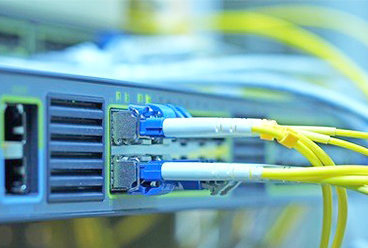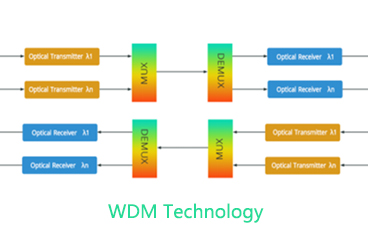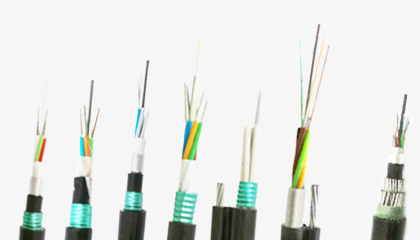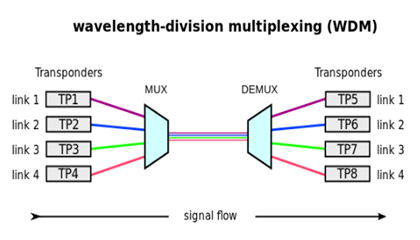OLT(Optical Line Terminal)
In the application of PON technology, the OLT equipment is the central office equipment connected to the optical fiber trunk line.
The optical access network is an access network that uses light as the transmission medium, instead of copper wire, for access to every household. The optical access network is composed of OLT (Optical Line Terminal), ONU (Optical Network Unit) and ODN (Optical Distribution Network) three parts. Among them, OLT and ONU are the core components of the optical access network.
The main functions of OLT
1. Send Ethernet data to ONU (optical network unit) by broadcasting;
2. Initiate and control the ranging process, and record the ranging information;
3. Allocate bandwidth for the ONU, control the start time and the size of the sending window for the ONU to send data.
ONU (Optical Network Unit)
ONU is divided into active optical network unit and passive optical network unit. Generally, devices equipped with network monitoring including optical receivers, upstream optical transmitters, and multiple bridge amplifiers are called optical nodes. The PON uses a single optical fiber to connect to the OLT, and then the OLT connects to the ONU. ONU provides services such as data, IPTV (i.e. interactive network television), and voice (using IAD, i.e. Integrated Access Device), truly realizing "triple-play" applications.
The main functions of ONU
1. Selectively receive the broadcast sent by the OLT, and respond to the OLT if the data needs to be received;
2. Collect and buffer the Ethernet data that the user needs to send, and send the buffered data to the OLT according to the allocated sending window.
The application of ONU can effectively improve the uplink bandwidth utilization of the entire system, and it can also configure the channel bandwidth according to the network application environment and applicable service characteristics to carry as many end users as possible without affecting the communication efficiency and communication quality, and improve the network utilization Rate and reduce user costs. ONU devices can be classified according to multiple application scenarios such as SFU, HGU, SBU, MDU, and MTU.
PON(Passive Optical Network)
PON (Passive Optical Network) means that the ODN(Optical Distribution Network) does not contain any electronic devices and electronic power supplies. ODN is all composed of passive devices such as optical splitters (Splitter) and does not require expensive active electronic equipment.
A passive optical network(PON) includes an optical line terminal (OLT) installed in the central control station, and a group of matching optical network units (ONUs) installed in the user's premises. The optical distribution network (ODN) between the OLT and the ONU contains optical fibers and passive optical splitters or couplers.
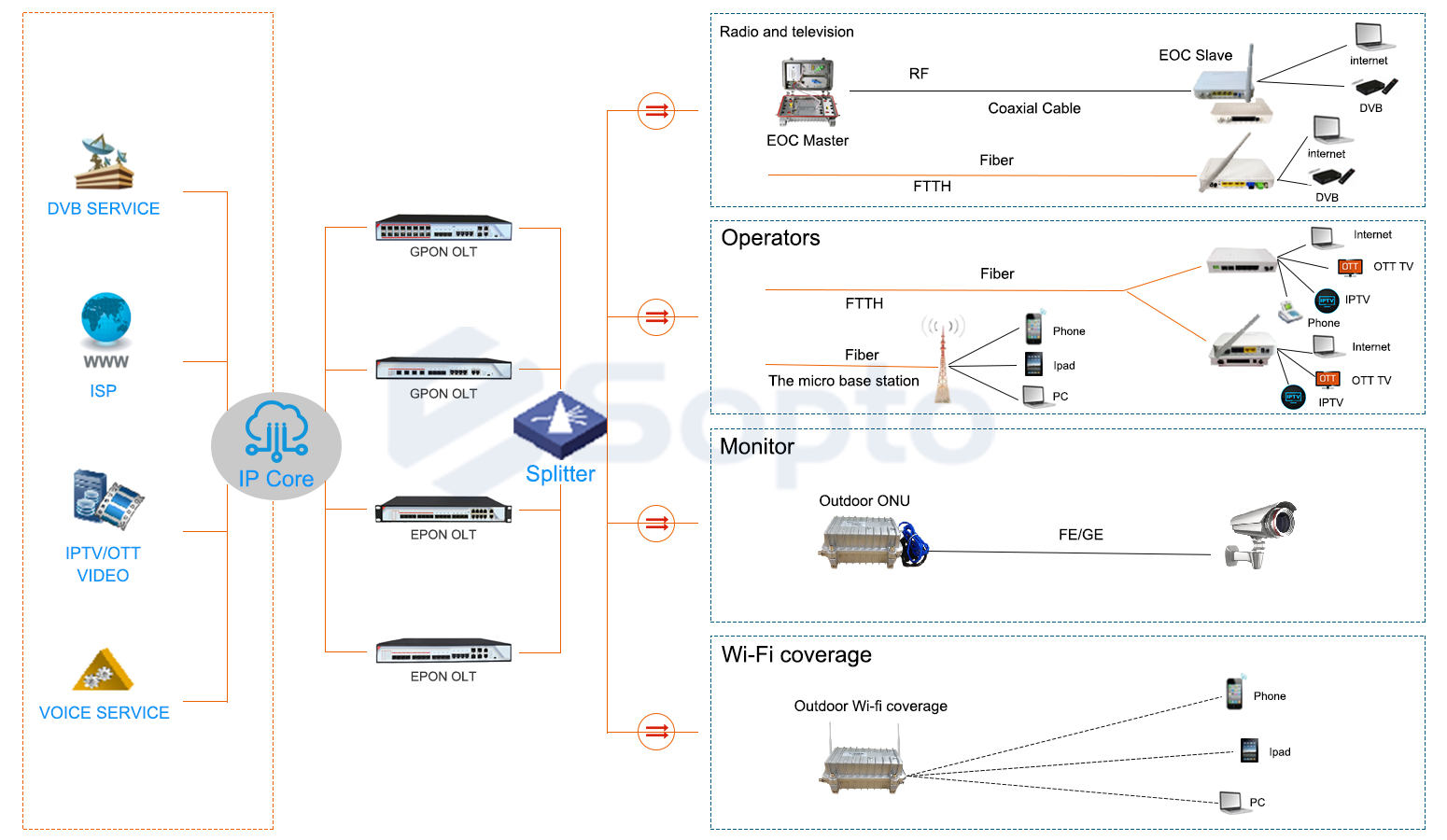
PON system advantages
1. Relatively low cost, simple maintenance, easy to expand, and easy to upgrade. The PON structure does not require power supply or electronic components during transmission, so it is easy to lay and basically does not require maintenance, which saves a lot of long-term operating costs and management costs.
2. The passive optical network is a pure medium network, which completely avoids the influence of electromagnetic interference and lightning, and is extremely suitable for use in areas with harsh natural conditions.
3. The PON system occupies little central office resources, the initial investment of the system is low, expansion is easy, and the return on investment is high
4. Provide very high bandwidth. EPON can currently provide symmetrical 1.25Gb/s upstream and downstream bandwidth, and can be upgraded to 10Gb/s with the development of Ethernet technology. GPON is up to 2.5Gb/s bandwidth.
5. A wide range of services. As a point-to-multipoint network, PON uses a fan-shaped structure to save CO resources and serve a large number of users. The way that users share central office equipment and optical fiber saves users' investment.
6. Flexible bandwidth allocation and guaranteed quality of service (QoS). The G/EPON system has a complete system for bandwidth allocation and guarantee. A user-level SLA can be achieved.
ODN(Optical Distribution Network)
ODN is an FTTH network based on PON equipment, and its role is to provide an optical transmission channel between OLT(Optical Line Terminal) and ONU(Optical Network Unit). From the functional point of view, the ODN can be divided into four part , the feeder optical cable subsystem, the distribution optical cable subsystem, the household line optical cable subsystem and the optical fiber terminal subsystem from the central office to the user end. The feeder section from the ODF (Optical Distribution Frame) of the central office room to the optical cable distribution point is used as the backbone optical cable to achieve long-distance coverage; the distribution section from the optical cable distribution point to the user access point is to the user area along the feeder optical cable Carrying out the nearest distribution of optical fiber; the entry section from the user's access point to the terminal realizes the entry of optical fiber into the home.
The ODN network construction cost is relatively high, up to 50% to 70% of the overall investment, which is the focus of FTTx investment. At the same time, it is also a difficult point in FTTx management. ODN mostly adopts P2MP topology, there are many connection nodes in the network, and network management is complicated. Optical fiber is more sensitive than copper wire and more easily damaged. Therefore, efficient construction, operation, and maintenance of ODN are essential, and a set of intelligent and accurate management solutions are required to ensure that the ODN network is fully utilized and effectively protect long-term investments.
Tags : Optical Line Terminal(OLT), Optical Network Unit(ONU), Passive Optical Network(PON),Optical Distribution Network(ODN)
— END —




